| Plastered the staircase hall with TopFinish |
Next phase of the plastering project in the staircase hall |
Almost finished plastering the first phase of the ceiling of the staircase hall
This week, I almost finished plastering the first phase of the ceiling of the staircase hall. I went to a Swedish folk music course, and last but not least, I have analyzed ten million words this week since October 2017 while writing this blog.
Monday 5 February
Today, I worked from home. DW went to the office. It was her birthday today. She brought cakes for he colleagues to celebrate the anniversary with her.
Tuesday 6 February
I went to the office today, and DW worked from home. I was late today.
Wednesday 7 February
Today, I worked from home in the morning, and in the afternoon, I worked for myself.
Thursday 8 February
Worked at the office. Brought the car for repair. They fixed all the things to fix. Especially the petrol pump was expensive. I was okay with it as long as I could drive the car without interruption and in dangerous situations.
In the evening, I continued working on office things. An urgent issue has emerged. I will have a day off tomorrow, so I thought I would give the thing my time this evening so all will be fine next week. It became really late. I did not feel I had completely fixed the issue when I stopped.
Friday 9 February
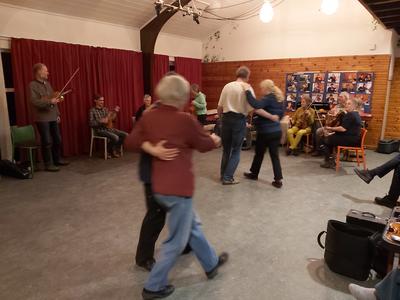 Today, I had a day off. DW worked from home. I had a slow morning. The idea of having the day off was to land before going on the folk music weekend. I packed my things. We had a walk around lunchtime. We talked about the shed we want to build. I suggested we make a simple drawing of what we have in mind to use as a base for further investigation.
Today, I had a day off. DW worked from home. I had a slow morning. The idea of having the day off was to land before going on the folk music weekend. I packed my things. We had a walk around lunchtime. We talked about the shed we want to build. I suggested we make a simple drawing of what we have in mind to use as a base for further investigation.
I plastered one bucket of TopFinish in the lower part of the ceiling. It was also great to have done something on the plastering project this weekend.
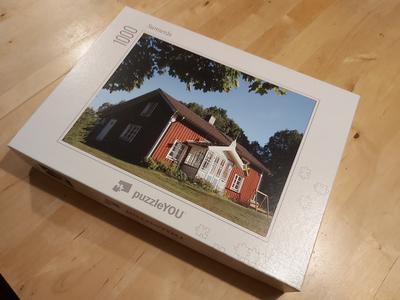 The puzzle arrived! I bought two of these. We will keep one, and one will be sent to the people who rented the cottage the longest. I hope they will like it.
The puzzle arrived! I bought two of these. We will keep one, and one will be sent to the people who rented the cottage the longest. I hope they will like it.
Around 5PM, I drove to Austerlitz. On the way, on the other side of the motorway (highway), there was a massive traffic accident. On my side, there was only a traffic jam for people wanting to see what was happening. My traffic jam was relatively short. In the following 20 kilometers, people had been in traffic jams for so long that they stood beside the car in small groups, talking.
I reached Austerlitz well on time and did not make a detour as I did two years ago.
I had a room to myself the previous two years, but not this time. I shared a room with four more people. Last year, it was much colder. This year, it is as if we are in April or May, but no, it is mid-February.
We started playing music after dinner. It was a little earlier than planned, and not all participants had arrived, so we had a round of presenting ourselves. Not like people do it, but as musicians: Each person played a tune, and the rest joined in.
 When it was time for the official course, our teacher, Anders Almlöf, started to teach us a schottis from Åker Erland. He said we would play in G-bass and switch to A-bass later. We sat in a large circle with 20 students. I had the same place as last year. The schottis was not that challenging. We were warm in the fingers and went on with pols from Engerdal in Norway. That was a little more challenging.
When it was time for the official course, our teacher, Anders Almlöf, started to teach us a schottis from Åker Erland. He said we would play in G-bass and switch to A-bass later. We sat in a large circle with 20 students. I had the same place as last year. The schottis was not that challenging. We were warm in the fingers and went on with pols from Engerdal in Norway. That was a little more challenging.
The third and final tune for the evening was Polska after Sjungar Lars in Lima. Anders insisted that the first beat would be shorter. It gave the tune a kind of elastic phantom beat. I do think that aspect is the first thing I will destroy when I play it myself when I am alone.
I recorded the tunes with my phone. Unfortunately, it is not okay to publish the tunes here, so I will not do that. If I record myself playing the tunes, it is okay to publish that, but that will not sound so great, so I will not do that. Not just yet.
We played tunes together randomly when the evening's official course part was finished. Usually, a person comes up with a tune, and the rest catch up with it and play it together to the best of their capabilities. This went on until over 1 AM.
Then I went to bed. I had prepared it earlier in the evening, so I just had to sneak into the sleeping bag as quietly as possible. I noticed a blinking light on the wall. It was the thermostat. Some new technically advanced features, and obviously, it had to have a bright white light blinking every twenty seconds because that is what you want when sleeping in a room. I conquered my fear of waking the rest of the roommates and decided to cover the blinking device with a sock. It worked!! It turned out that the roommates had been annoyed by the feature but decided to do something about it the next day. This was much better.
Saturday 10 February
This was the second day of the course. We learned another five tunes. It was great! We started with a wedding march by Pers Hans Olsson to Kalle and Lisa. It had three parts. Usually, I get confused by three-part tunes when I play the tunes by myself. The rumor is that Pers Hans Olsson was a "difficult" person, but Anders did not agree with that or did not want to elaborate on what that could mean. We leave it at that. The tune was great, though.
It was essential to use the whole bow as much as possible, designate some phrases, and "aim for the end notes of the phrase ahead of us."
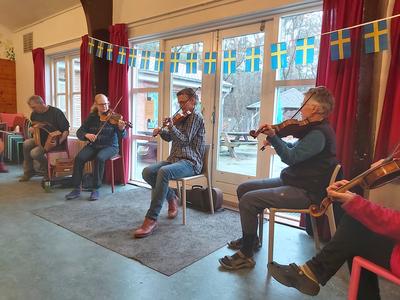 Then we played a Polska by Erkgärds Mats called "Norska."
Then we played a Polska by Erkgärds Mats called "Norska."
After lunch, the violins were tuned into A-bass. Anders said lowering the tension first and then increasing it was better. One should try to make that into a habit; it keeps most strings intact when done that way. Secondly, he suggested one should take the bridge on the first string from the left (Usually G) and put a bit of pressure on it, and one would usually feel the bridge readjusting itself. It snaps into a new location. So when going from G to A, tension is building up, and the bridge needs a minuscule tick back. Going from A to G, the bridge needs a minuscule tick forward. It worked beautifully!
We played a tune called Malungslek. We had to work that bow more intensely when playing A-bass.
Next, we played a Polska after Helmer Kölvang called "Gamle Per Moen."
This was followed by a Springlek after Lissmyr Erik. This tune concluded the official course section on Saturday. I had developed a sore index finger on my left hand. I had been holding the violin incorrectly for the last couple of tunes.
We first had tomato soup for dinner, followed by french fries. It was good fries, actually. You don't go here for the culinary experience, that is for sure.
 After dinner, we started playing music together. After a while, guests arrived. They wanted to dance! There were dance, music, and snacks. Someone had made the traditional Swedish pastry called Semlor. They were delicious. The party continued into the morning. Well, kind of. I had my finger to worry about, so I took it slightly easier with playing. I actually was the first to go to bed in the room.
After dinner, we started playing music together. After a while, guests arrived. They wanted to dance! There were dance, music, and snacks. Someone had made the traditional Swedish pastry called Semlor. They were delicious. The party continued into the morning. Well, kind of. I had my finger to worry about, so I took it slightly easier with playing. I actually was the first to go to bed in the room.
Sunday 11 February
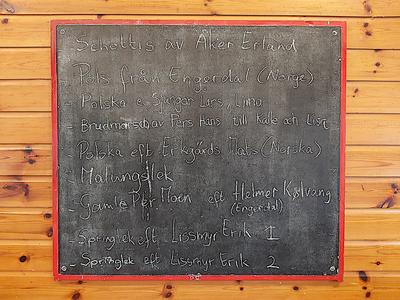 This morning, we played Springlek by Lissmyr Erik on the violins tuned to A-bass. With that, the list of tunes was complete.
This morning, we played Springlek by Lissmyr Erik on the violins tuned to A-bass. With that, the list of tunes was complete.
Then we had lunch, and after that, we practiced the tunes we had learned. I felt these tunes might work very well with my brain and violin.
In the early afternoon, this magnificent weekend ended. I helped out with cleaning up the place. That felt like a good deed. Then I drove home!
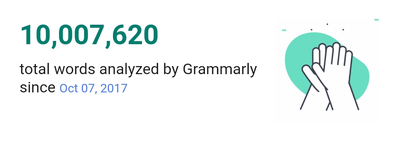 This week, I have analyzed ten million words with Grammarly since October 2017! I have almost finished the first phase of plastering the staircase hall and learned more folk music tunes!
This week, I have analyzed ten million words with Grammarly since October 2017! I have almost finished the first phase of plastering the staircase hall and learned more folk music tunes!
When I came home, I started searching for harddisks that might hold a backup of my own music library. I found a couple of tunes but not the entire library. Getting all the tunes back from my private library will take more effort. It is a year since I realized the library's SD card had crashed.







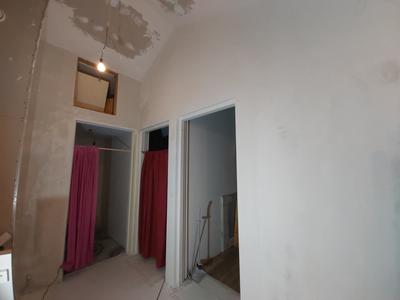
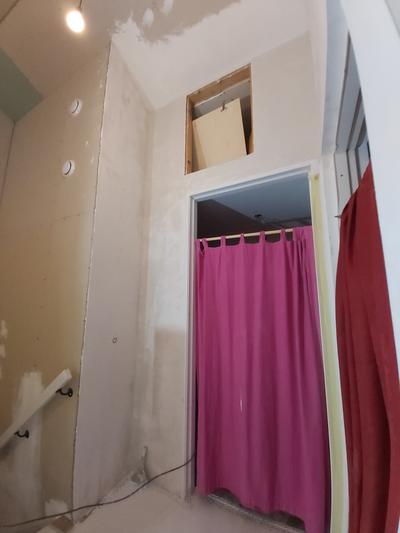

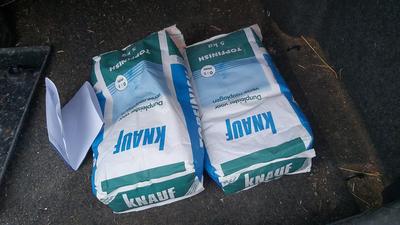
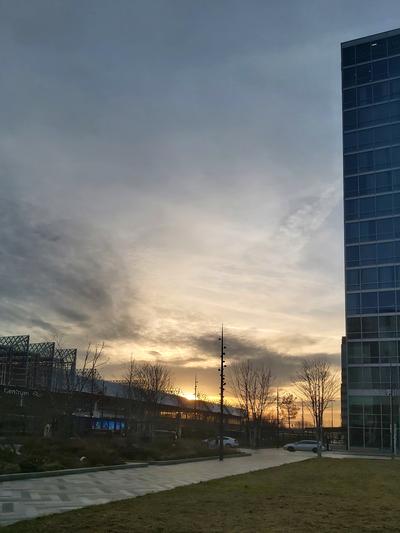
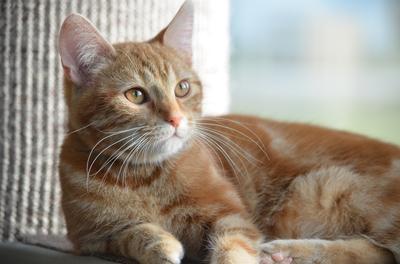

 Installed more lamp fixturesLight installationsSea container picked upSea container soldFinished cleaning the sea containerNice sunrise picturesGreat progress in the barnSeacontainer on saleSea container is empty!Sea container almost empty!Moving planksThis week no activities in the barnAll tiles mountedMounted the winchContinued to empty the sea container
Installed more lamp fixturesLight installationsSea container picked upSea container soldFinished cleaning the sea containerNice sunrise picturesGreat progress in the barnSeacontainer on saleSea container is empty!Sea container almost empty!Moving planksThis week no activities in the barnAll tiles mountedMounted the winchContinued to empty the sea container I moved from Sweden to The Netherlands in 1995.
I moved from Sweden to The Netherlands in 1995.
Here on this site, you find my creations because that is what I do. I create.